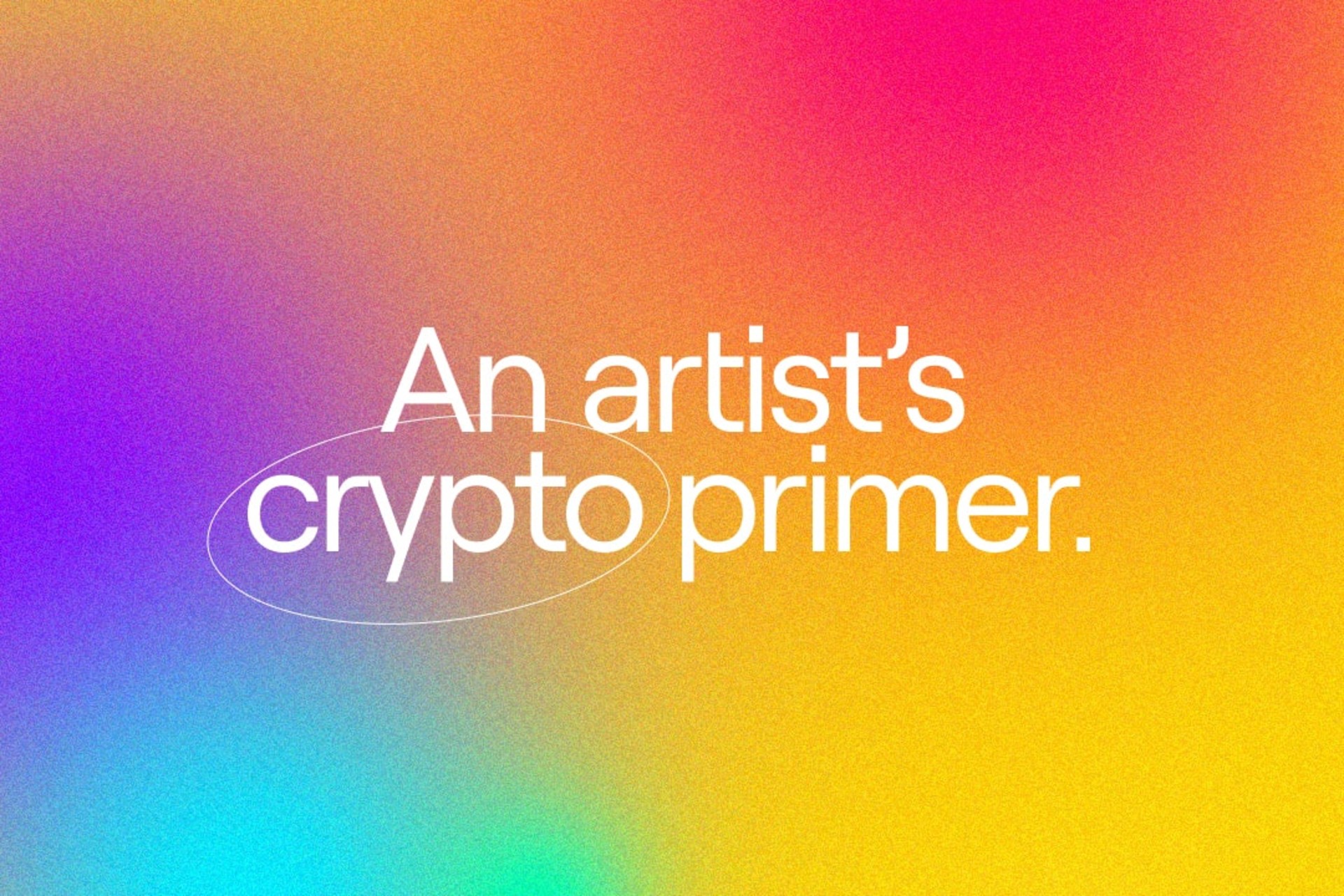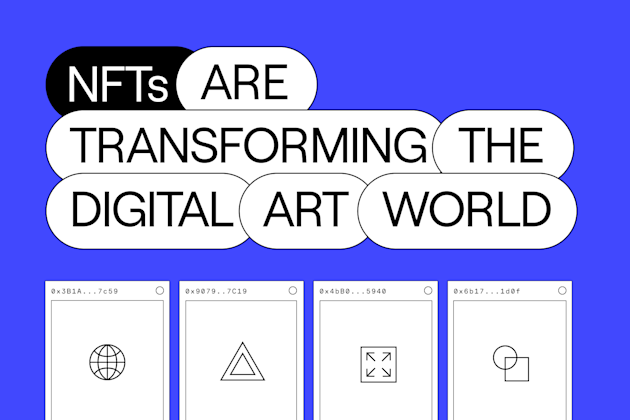An artist’s crypto primer

In our day-to-day lives, we don’t need to actively think about how money works. It’s a system we were born into, so we’ve mostly just accepted it. But it’s become painfully obvious that our current financial systems aren’t working for us. In fact, they’re corrupt and they’re broken.
Cryptocurrency technologies offer a new model. They enable us to reinvent the concept of money by turning it into something that’s transparent, decentralized, and dynamic—and by enabling people to define value for themselves, without a governing body telling them what holds value, and what doesn’t.
At Foundation, we’ve made it easy to turn creative work into cryptocurrency, so that artists can take control of the value of their work. We’re doing this because we believe that decentralization can be transformative for creative economies, and because we know how inaccessible crypto has been to most artists so far.
So, we invite you to dive in and start experimenting. Use Foundation to try turning a limited-edition artwork or experience into a token that collectors can buy and trade.
Then, come back and dive in a little deeper. We’ve taken care to put together an artist’s primer to the core ideas of crypto, which you’ll find below.
Basic Terms of Crypto
Cryptocurrencies (or “crypto”) are digital currencies that are not controlled by any one governing body, like a government or a bank. Instead, each currency exists on a transparent network across many different computers. Every time cryptocurrencies change hands, each transaction is recorded across that network of computers (which is called a blockchain—more on this next). Bitcoin is the most well-known cryptocurrency, but there are thousands of others, each with their own specifications.
A blockchain is basically a public digital ledger for a particular cryptocurrency that irreversibly records every transaction that happens in chronological order, and publishes it for anyone to see. Transactions are stored in “blocks,” and each block can hold a large number of transactions. With blockchains, all transactions must be verified by a decentralized network of independent computers that, in a sense, collectively manage all the activity on the network. Computers accept and include transactions in blocks only if the transaction is valid, and it is up to the software of those machines to accept or reject transactions from entering blocks based on the blockchain’s inherent rules.
Bitcoin (BTC) is the most well-known cryptocurrency, and is often conflated with cryptocurrency itself. Bitcoin introduced the blockchain concept in 2009 and paved the way for other cryptocurrencies that followed. It had a big boom at the end of 2017, as a media frenzy brought a ton of new speculators to the table, and drove the price up to nearly $20K per BTC. Since then, the price has stabilized, but it remains the most heavily traded cryptocurrency.
Tokens represent assets that can be traded on blockchains. On Foundation, we make it easy for creators to issue a unique token for an artwork they want to sell.
NFTs, or "Non-Fungible Tokens," are one-of-a-kind tokens that represent a unique good or asset. They’ve been called “crypto collectibles” because, much like trading cards, NFTs can be bought and sold by collectors. With scarcity and demand comes value—and when you add virality into the mix, NFTs representing digital art have the potential to open up dynamic marketplaces where creators can release unique artworks, and collectors can have fun buying and trading them.
Digital wallets are what allow you to hold and make transactions with cryptocurrency. Your digital wallet is essentially an “address” (which will look like a long string of numbers) where cryptocurrencies can be sent, and from which they can be spent. A digital wallet contains two pieces of information: a public key (kind of like a routing number) and your private key (kind of like the password to your online bank). In order to buy and trade on Foundation, you need to first have a digital wallet set up. Coinbase is one of the most user-friendly services you can use to set up a digital wallet, and begin buying and trading cryptocurrency assets.
Mining for cryptocurrency essentially happens when a computer offers its processing power to help verify transactions on the blockchain, in exchange for a small amount of newly created cryptocurrency assets. Most of the computers that do this work belong to big companies, but it’s possible to mine cryptocurrencies on your own personal computer.
Ethereum is the second largest cryptocurrency blockchain after Bitcoin’s blockchain. “Ether” is the underlying currency that operates on the Ethereum blockchain, but there are almost 200 other projects that leverage the Ethereum blockchain to operate, including Foundation! Ether, or ETH, is the cryptocurrency used for all transactions on our site—collectors bid on works with it, and creators get paid in it.
Fiat is how a lot of people in the crypto space refer to government-issued currency, like US dollars or Euros. It’s used in contrast to cryptocurrencies, which aren’t issued and governed by nation states.
Smart contracts are similar to normal contracts that outline the parameters of a deal, with a lot of additional possibilities built in. The difference is that smart contracts are completely digital, and automatically enforced. With a smart contract, you don’t need an intermediary (like a lawyer) to ensure that the parameters of an exchange are adhered to, because it happens automatically. Smart contracts exist on the blockchain, which also means they can’t be changed or tampered with retroactively. With Foundation, each creator has their own smart contract that ensures that they receive the funds they earn from fees and redemptions.
Decentralized Autonomous Organizations (DAOs) are essentially groups of people who use blockchain technologies to collectively make decisions. This enables organizations, collectives, granters, and more to come together over the internet in a seamless way, even if nobody in the DAO has ever met before. DAOs have become popular among blockchain designers as an entity for managing all kinds of processes, assets, and projects, as they offer a radically transparent and efficient way to organize and build together online.
We’ll keep adding to this post as we think of more terms and projects to highlight.
Read more

NFTs are transforming the digital art world.

What Molly Soda has learned from watching YouTube all day.
